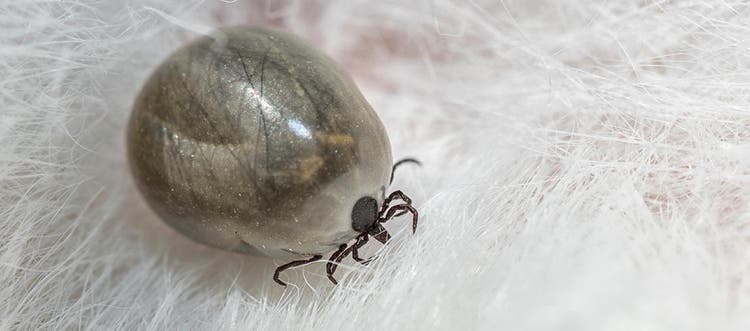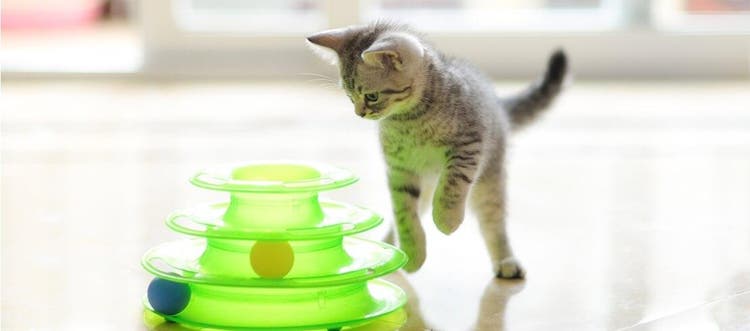Fleas have moved in! Your dog is scratching and biting itself and spinning around in circles erratically. You may have even noticed one of the tiny bloodsucking critters jump onto you. Your first concern might be about your poor pet, but that may be quickly followed by the alarming thought: "What about fleas on humans? Can fleas from my dog and cat live on me too?”
First things first: can fleas live on humans?
Do fleas live on humans? The short answer is that fleas may bite you, but they won’t live on you. Fleas will bite humans but prefer to seek out your dog or cat as their host and blood meal.
Two flea species most commonly live and dine on your cats and dogs:
Ctenocephalides felis – the scientific name for cat fleas, and Ctenocephalides canis – the scientific name for dog fleas.
Despite their names, the most common flea found on both dogs and cats is the cat flea. That’s because fleas are not host specific, meaning that while their preferred host is a cat or dog, they will happily feed on any red-blooded mammal, including humans!
The good news for pet owners is that while fleas may certainly bite humans, they won’t live on them. Scientific research shows that our relatively hairless bodies don’t make great hiding places, they’re difficult for fleas to attach to and they don’t provide enough heat for fleas to survive on them long term. The dark, moist environment of your pet’s fur, however, is the perfect place for fleas to live. This is also why fleas can’t breed on you. Fleas need a dog, cat (or any other pet, for that matter) to thrive. If humans are the only food source around fleas will be unable to complete their life cycle and multiply.
Don’t breathe a sigh of relief yet! When fleas bite humans they may not live on us forever, but they will, however, stay on our skin and inside our clothes in the short term. That’s because fleas use humans as a “carrier” as they wait to jump onto a more suitable host, like your cat or dog. Once they get onto your pet, fleas will quickly lay their eggs, which then fall all around your home into your furniture, carpets, and the upholstery of your car. Those flea eggs lay dormant before hatching into larvae and developing into adult fleas.
Is there also such a thing as a human flea?
Yes, but don’t fret. There are around 2,000 kinds of flea worldwide but luckily only one type, Pulex irritans, lives on human beings and so far, it’s not much of a problem in Canada.
How do you know if you have been bitten by fleas?
To find out whether that itchy red spot you’ve found on your skin is just a spot, a bug bite or something more sinister, here are some ways flea bites appear:
- A small scab on your skin which has a light red ‘halo’
- Very small red marks around a central red spot
- Clusters of red bite marks that have swollen in a similar way to mosquito bites
- Bites on your ankles and legs, in particular
Other signs your household has fleas include:
- Black specks, which look like ground pepper. This is called flea ‘dirt’ which is, in fact, flea feces.
- Your pets are scratching more than usual
Can humans catch disease from fleas?
Fleas bites aren’t just annoying. Infected fleas can also spread diseases to humans.
Flea-borne diseases
- Ignoring a flea infestation doesn’t just harm your pet. Fleas can also pose a health risk to you and your family. On top of the discomfort of itchy bites, infected fleas can spread potentially deadly diseases such as typhus and the plague, although these are very rare in Canada. It’s more common that a person could contract Bartonella, commonly referred to as cat scratch disease, from infected flea stool under the cat’s claws. This can cause flu-like symptoms and potentially lead to serious complications, including infections in the bones, joints, liver, lungs or spleen.
Allergic reactions to flea bites
- Some people may have a stronger reaction to flea bites. Their skin can become swollen, itchy and irritated or display red bumps, hives or a rash. If this happens, it’s best to visit a healthcare professional.
Risk of tapeworm infection
- Fleas can carry the tapeworm parasite and pose a serious health risk to your pet and your household. If a flea carrying the Dipylidium caninum tapeworm is ingested by your pet, such as during grooming, it can develop into a tapeworm infestation inside your pet. Very rarely, if you are petting your pet and accidently ingest an infected flea you could also contract tapeworm.
How do I get rid of fleas…?
If you’ve got a flea infestation in your home, you need a two-step approach. On top of treating your pet for fleas you’ll also need to thoroughly clean your household to ensure you remove any hidden flea eggs and larvae that are waiting to re-infest. Don’t forget to clean out your car if your pet travels in it.
On myself or my family?
- Never use pet flea medicine on humans! Medicine for your pets should only be used on your pets as it can make humans very sick.
- Soothe the itch. The biggest complaint about flea bites is itchiness. To get relief, speak to a health care professional.
- Avoid scratching. As hard as it might be, try to avoid scratching the bite. This can open up the scab and take longer for it to heal. It also increases your risk of infection.
On my pets?
- Prevention is always better than cure – Treating your pet regularly with a flea preventative treatment is one of the most effective ways to prevent a flea infestation. There are many different types of flea control products on the market, including tablets, flea collars and monthly topical treatments. Your veterinarian will be able to recommend the right product to keep you, your pets and home flea-free.
In my home?
Whenever you’re treating your pet for fleas you will also need to tackle the flea infestation in your home. This is because fleas love warm hidden places, which makes carpets, furniture and other soft furnishings the perfect habitat for their larvae and flea eggs.
To remove fleas in the home:
- Vacuum regularly – Thoroughly vacuum all carpets, rugs, sofas and other upholstered furniture, making sure you get into hidden places like underneath the sofa and bed, and behind furniture. Pay special attention to areas where your pet likes to sleep or play but ensure you cover the whole house, as fleas and flea eggs don’t just stay in places where your dog or cat has been.
- Clean linen – Wash all bedding and other linens, including blankets, clothes and curtains, on the “hot” setting
- Clean your pet’s bedding – Wash your pet’s bedding separately from your own in an equally hot setting. If you can, dry it on a hot temperature as well.
- Vacuum out your car - if your pet has been on its upholstery.
For more information about getting rid of fleas in the home, visit this link.
It can take several weeks and sometimes months to fully tackle a flea problem, but as long as you’re patient and consistent, you’ll get there. Once you successfully rid your pet and home of fleas make sure you set up a regular flea treatment plan to prevent re-infestation in the future.

Advantage®II for Cats & Dogs
Advantage®II is a fast-acting flea treatment for cats, dogs, rabbits and ferrets









